The Cummins PT Fuel Pump Manual provides a comprehensive guide for understanding and servicing PT fuel pumps in Cummins diesel engines. It covers installation, maintenance, troubleshooting, and safety protocols essential for optimal performance and longevity. This manual is tailored for technicians and mechanics working with Cummins engines, ensuring precise fuel delivery and system reliability.
1.1 Overview of the Cummins PT Fuel Pump System
The Cummins PT Fuel Pump System is a critical component of Cummins diesel engines, designed to deliver precise fuel pressure and flow to the engine’s cylinders. It operates as part of the fuel injection system, ensuring efficient combustion and engine performance. The PT pump is known for its mechanical design, which integrates with either a mechanical governor or an Electronic Fuel Control (EFC) system. This system is compatible with various Cummins engine models, including the NT and KT series, and is essential for maintaining optimal engine operation; The PT pump’s functionality is detailed in the Cummins PT Fuel Pump Manual, which provides insights into its operation, maintenance, and troubleshooting.
1.2 Importance of the PT Fuel Pump in Diesel Engines
The PT fuel pump plays a vital role in diesel engines by ensuring precise fuel delivery and pressure regulation, crucial for efficient combustion. It serves as the primary component of the fuel injection system, directly impacting engine performance, power output, and fuel efficiency. The PT pump’s ability to maintain optimal fuel pressure and flow is essential for preventing issues like hard starting, low power, and engine misfires. Its reliability ensures consistent engine operation under various load conditions, making it indispensable for Cummins diesel engines. Proper maintenance and understanding of the PT pump, as outlined in the Cummins PT Fuel Pump Manual, are critical for sustaining engine health and longevity.
1.3 Purpose of the Cummins PT Fuel Pump Manual
The Cummins PT Fuel Pump Manual serves as a detailed guide for technicians and mechanics to understand, install, maintain, and troubleshoot the PT fuel pump system. Its primary purpose is to provide comprehensive instructions for ensuring optimal performance, diagnosing common issues, and performing repairs. The manual covers technical specifications, operating principles, and safety protocols, offering a one-stop resource for servicing Cummins diesel engines. By following the manual, users can extend the lifespan of the fuel pump, prevent operational failures, and maintain engine efficiency. It is designed to empower professionals with the knowledge needed to work effectively with Cummins PT fuel systems, ensuring reliability and peak performance.

Technical Overview of the Cummins PT Fuel Pump
The Cummins PT Fuel Pump delivers precise fuel pressure and flow to ensure efficient combustion. Its design integrates mechanical and electronic controls for optimal engine performance and reliability.
2.1 Operating Principles of the PT Fuel Pump
The Cummins PT fuel pump operates by drawing fuel from the tank and pressurizing it according to throttle input. It uses a mechanical or electronic governor to regulate fuel flow, ensuring precise delivery to the injectors. The pump’s design allows for proportional pressure increase, which is essential for maintaining optimal engine performance under varying load conditions. This mechanism ensures that the fuel is supplied at the correct pressure and timing, facilitating efficient combustion and reducing emissions. The integration of electronic fuel control (EFC) further enhances the pump’s ability to adjust fuel delivery dynamically, catering to modern engine demands for power and efficiency.
2.2 Key Components of the PT Fuel Pump
The Cummins PT fuel pump consists of several critical components essential for its operation. The pump housing serves as the main structure, enclosing the internal mechanisms. The gear assembly generates the necessary pressure by meshing and rotating, while the pressure regulator ensures fuel pressure aligns with engine demands. Fuel inlet and outlet ports facilitate the flow of fuel into and out of the pump. Additionally, the governor or Electronic Fuel Control (EFC) actuator regulates fuel delivery based on engine speed and load. These components work in harmony to deliver precise fuel pressure and flow, ensuring efficient engine performance and reliability.
2.3 Fuel Flow and Pressure Regulation
The Cummins PT fuel pump regulates fuel flow and pressure to meet engine demands. The pressure regulator adjusts fuel pressure proportionally to engine speed and load, ensuring optimal performance. Fuel flow is controlled by the pump’s internal gear mechanism, which increases pressure as fuel is drawn from the tank. The Electronic Fuel Control (EFC) system further refines fuel delivery by integrating with engine sensors to adjust pressure and flow dynamically. This precise regulation ensures efficient combustion, reduces emissions, and enhances engine reliability. Proper pressure and flow regulation are critical for maintaining performance, fuel efficiency, and minimizing wear on engine components.
2.4 Integration with Electronic Fuel Control (EFC)
The Cummins PT fuel pump integrates seamlessly with the Electronic Fuel Control (EFC) system, enhancing precision in fuel delivery. The EFC system uses sensors to monitor engine speed, load, and throttle position, adjusting fuel pressure and flow accordingly. This integration allows for dynamic control, ensuring optimal fuel delivery under varying operating conditions. The EFC actuator, either normally closed (NC) or normally open (NO), works in conjunction with the PT pump to regulate fuel flow precisely. This advanced system improves fuel efficiency, reduces emissions, and ensures smooth engine operation. The EFC system also enables features like variable speed operation and is compatible with both mechanical and electronic governance, making it a critical component for modern diesel engine performance.
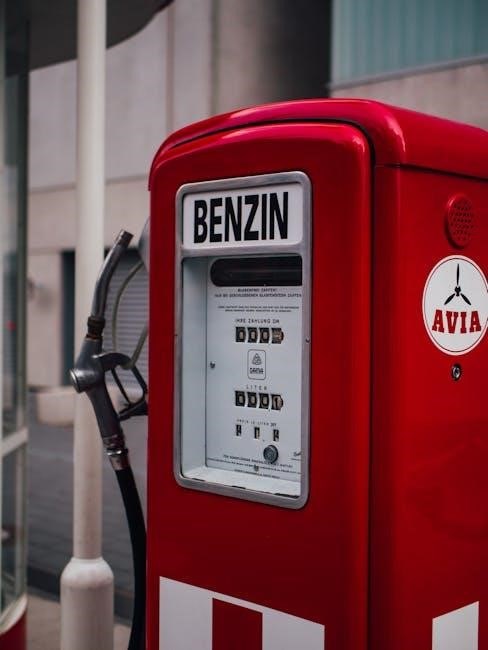
Installation and Removal of the Cummins PT Fuel Pump
The manual provides detailed, step-by-step instructions for installing and removing the Cummins PT fuel pump, emphasizing proper techniques and safety precautions to prevent damage and ensure reliability.
3.1 Pre-Installation Checklist
Before installing the Cummins PT fuel pump, ensure all components are thoroughly inspected for wear or damage. Clean the injection pump and mounting surfaces to prevent contamination. Disconnect the fuel shutdown valve electrical wire and remove fuel tubing and air tubes carefully. Refer to the manual for specific torque values and alignment procedures. Proper preparation ensures a smooth installation process and prevents potential issues. Always follow manufacturer guidelines to maintain system integrity and performance. This step is crucial for the longevity and efficiency of the fuel pump and overall engine operation.
3.2 Step-by-Step Installation Guide
Begin by aligning the PT fuel pump with the engine’s mounting bracket, ensuring proper fitment. Secure the pump using the specified bolts, tightening them in the recommended sequence. Reconnect the fuel lines, ensuring all connections are tight to prevent leaks. Attach the electrical connector to the fuel shutdown valve, verifying proper alignment. Reinstall the air tube and fuel tubing, following the manufacturer’s routing guidelines. Finally, test the system by priming the fuel lines and checking for leaks or unusual noises. Refer to the Cummins ST-445 test stand for precise calibration if necessary. Always follow the manual’s torque specifications to ensure a reliable installation.
3.3 Proper Removal Techniques
Before removing the Cummins PT fuel pump, ensure the engine is cool and the fuel system is depressurized. Disconnect the negative battery terminal to prevent accidental engine start. Label and disconnect the fuel lines, electrical connectors, and air tube for easy reinstallation. Use a wrench to loosen the mounting bolts, then carefully lift the pump from its bracket. Avoid twisting or forcing the pump, as this may damage the fuel system. Clean the area around the mounting surface to prevent contamination. Store the removed pump in a clean, dry place, and dispose of any drained fuel responsibly. Always refer to the manual for specific torque values and sequence to avoid damage during removal.
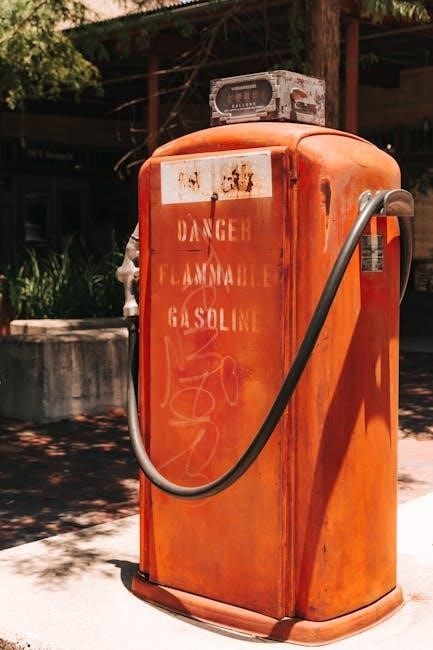
Maintenance and Repair of the Cummins PT Fuel Pump
Regular maintenance ensures optimal performance and longevity of the Cummins PT fuel pump. This includes cleaning, inspecting, and replacing worn components as specified in the manual.
4.1 Scheduled Maintenance Recommendations
Regular maintenance is crucial for the longevity and efficiency of the Cummins PT fuel pump. The manual recommends inspecting fuel lines, connections, and pump components every 100 to 200 hours of operation. Cleaning or replacing filters, as specified, ensures proper fuel flow and pressure. Technicians should also check for signs of wear or leaks in the pump and associated systems. Lubricating moving parts and verifying the integrity of electrical connections are additional key steps. Adhering to these schedules prevents premature wear and ensures consistent performance. Always use genuine Cummins parts for replacements to maintain reliability and warranty compliance. Proper documentation of maintenance activities is also advised for future reference.
4.2 Diagnostic Procedures for Common Issues
Diagnosing issues with the Cummins PT fuel pump involves systematic checks to identify faults. Start by inspecting fuel flow and pressure using specialized tools like the ST-445 test stand. Check for low fuel pressure, air leaks, or faulty electrical connections. Common issues include excessive wear on pump components, clogged fuel filters, or malfunctioning solenoids. Use the manual’s troubleshooting guide to isolate problems, such as no-start conditions or reduced engine performance. Perform visual inspections of fuel lines and connections for damage or leaks. Calibration errors in electronic fuel control systems may require resetting or reprogramming. Always follow Cummins’ diagnostic protocols to ensure accurate repairs and maintain system reliability.
4.3 Repair and Replacement Guidelines
Repairing or replacing the Cummins PT fuel pump requires careful adherence to manufacturer guidelines. Begin by disassembling the pump using specialized tools, following the manual’s step-by-step instructions. Inspect components for wear or damage, replacing parts like seals, plungers, or barrels as needed. Use genuine Cummins replacement parts to ensure compatibility and performance. After reassembly, recalibrate the pump using the ST-445 test stand to restore optimal fuel flow and pressure. Replacement involves removing the old pump, installing the new unit, and reconnecting fuel lines and electrical connections. Always follow proper torque specifications and safety protocols to avoid damage or leaks. Proper reinstallation ensures reliable engine operation and fuel efficiency.
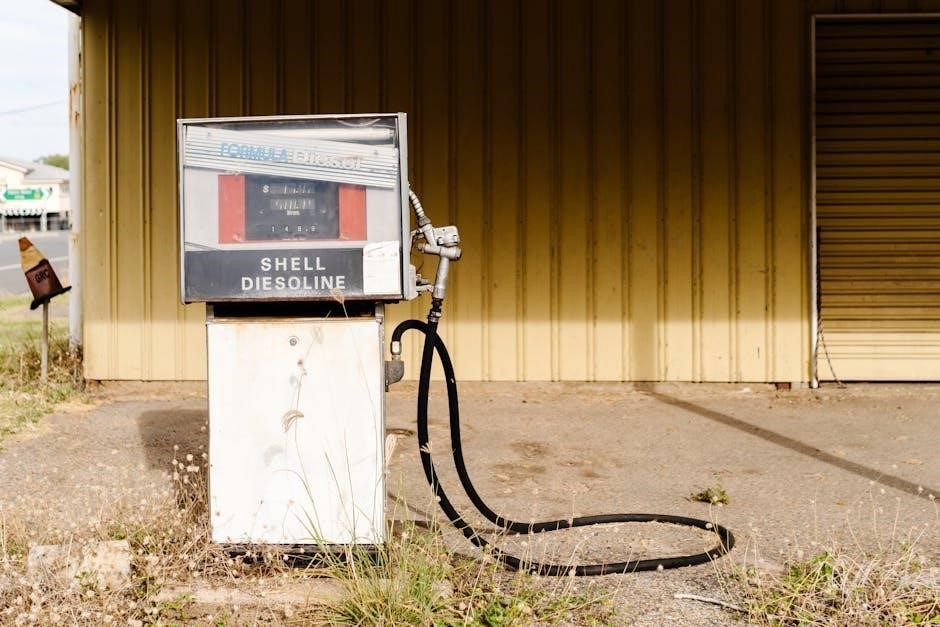
Troubleshooting Common Issues with the Cummins PT Fuel Pump
This section addresses common issues like no start, low power, or fuel leaks, providing diagnostic steps and solutions using tools like the ST-445 test stand and official manuals.
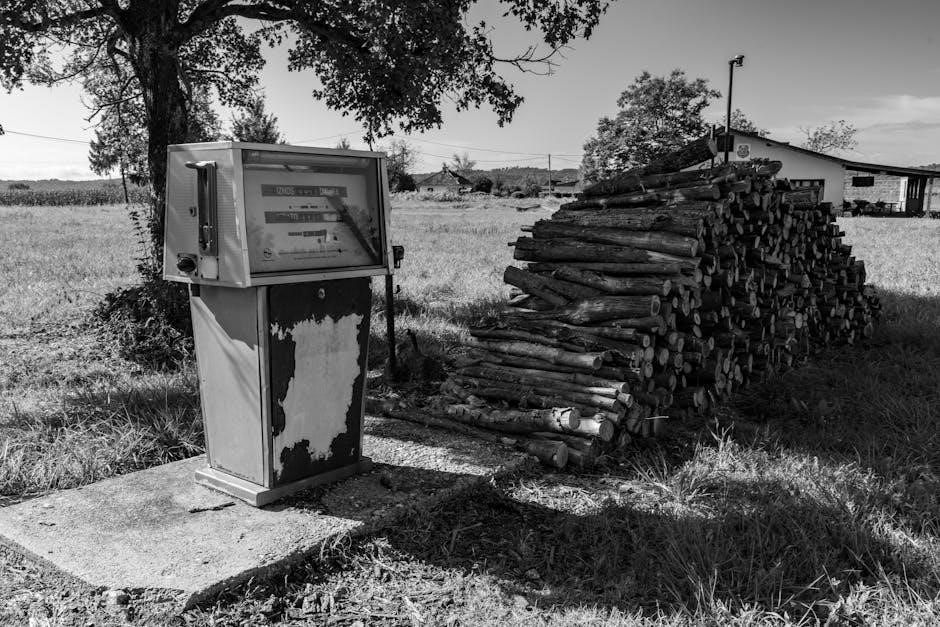
5.1 No Start or Hard Start Conditions
No start or hard start conditions in Cummins PT fuel pump systems often stem from issues like low fuel pressure, faulty electrical connections, or clogged fuel lines. Troubleshooting involves checking the fuel system for leaks, ensuring proper priming, and verifying electrical signals to the pump. The Cummins manual recommends using diagnostic tools like the ST-445 test stand to measure fuel pressure and flow accurately. Additionally, inspecting the fuel filter and ensuring the throttle is functioning correctly can resolve hard start issues. If problems persist, consulting the official service manual or contacting a certified technician is advised to avoid further damage to the fuel system. Proper diagnostics ensure reliable engine performance and prevent costly repairs.
5.2 Low Power or Reduced Performance
Low power or reduced performance in Cummins engines with a PT fuel pump can result from inadequate fuel flow or pressure. Causes may include a faulty pressure regulator, clogged fuel lines, or worn pump components. The manual recommends inspecting the fuel system for blockages and ensuring proper pressure settings. Testing fuel flow with the Cummins ST-445 test stand can identify malfunctions. Additionally, checking the Electronic Fuel Control (EFC) system for errors and ensuring proper throttle response is crucial. Addressing these issues promptly can restore engine performance and efficiency. Regular maintenance, as outlined in the manual, helps prevent such problems and ensures optimal fuel delivery for consistent power output.
5.3 Fuel Leakage or Pressure Loss
Fuel leakage or pressure loss in the Cummins PT fuel pump system can lead to reduced engine performance and efficiency. Common causes include worn or damaged seals, loose connections, or faulty pressure regulators. Inspecting the fuel lines, connections, and pump components for signs of wear or damage is crucial. The Cummins ST-445 test stand can help diagnose pressure loss by measuring fuel flow and pressure accurately. Addressing these issues promptly involves replacing damaged seals, tightening connections, or servicing the pressure regulator. Regular maintenance, as outlined in the manual, helps prevent such problems. Ensuring proper system integrity is essential for maintaining optimal fuel pressure and preventing leakage, which is vital for reliable engine operation.
5;4 Electronic Control Malfunctions
Electronic control malfunctions in the Cummins PT fuel pump system can disrupt fuel delivery and engine performance. Issues may arise from faulty sensors, wiring problems, or errors in the Electronic Fuel Control (EFC) system. Symptoms include erratic fuel flow, loss of power, or engine stalling. Diagnosing these problems often requires advanced tools, such as diagnostic scanners, to identify error codes and isolate faults. The Cummins ST-445 test stand can also assist in verifying electronic control functionality. Repairing these issues may involve replacing faulty components or reprogramming the EFC system. It is crucial to consult the official Cummins service manual for detailed troubleshooting and repair procedures to ensure proper system restoration and reliability.
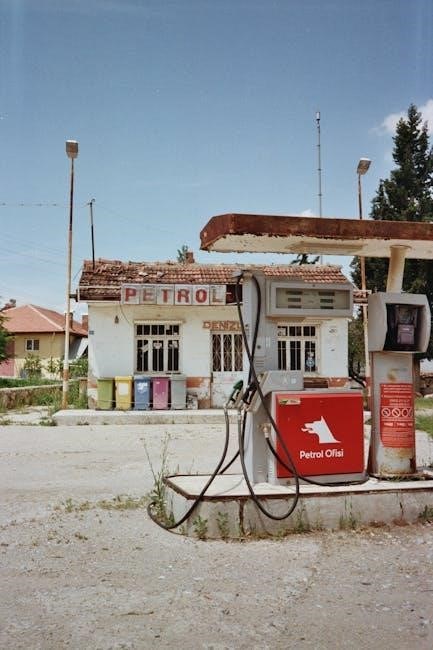
Cummins PT Fuel Pump Test Stand and Calibration
The Cummins ST-445 test stand is specifically designed for testing and calibrating PT fuel pumps, ensuring accurate performance evaluation and optimal fuel delivery system functionality.
6.1 Overview of the Cummins ST-445 Test Stand
The Cummins ST-445 test stand is a specialized diagnostic tool designed to evaluate the performance of PT fuel pumps. It allows technicians to simulate real-world operating conditions, ensuring accurate testing of fuel pressure, flow rates, and system integrity. The ST-445 is compatible with various Cummins engine models and can be used in conjunction with other Cummins test equipment. Its advanced features enable precise calibration and troubleshooting, making it an essential resource for maintaining optimal fuel system performance. This stand is particularly useful for identifying issues such as pressure loss or irregular fuel flow, ensuring reliable engine operation. Proper use of the ST-445 requires adherence to Cummins’ guidelines and safety protocols.
6.2 Calibration Procedures for Optimal Performance
Calibration of the Cummins PT fuel pump is critical for ensuring precise fuel delivery and engine performance. The process involves setting baseline pressures and adjusting flow rates to match engine specifications. Technicians should use the Cummins ST-445 test stand to simulate operating conditions and verify calibration accuracy. The manual provides detailed steps for adjusting the pump’s internal components, such as the pressure regulator and fuel metering valve. Proper calibration ensures optimal fuel efficiency, power output, and emissions compliance. It is essential to follow the manufacturer’s guidelines and perform calibration in a controlled environment. Regular recalibration is recommended after repairs or when engine operating conditions change. Always refer to the official Cummins PT fuel pump manual for specific instructions and safety precautions.
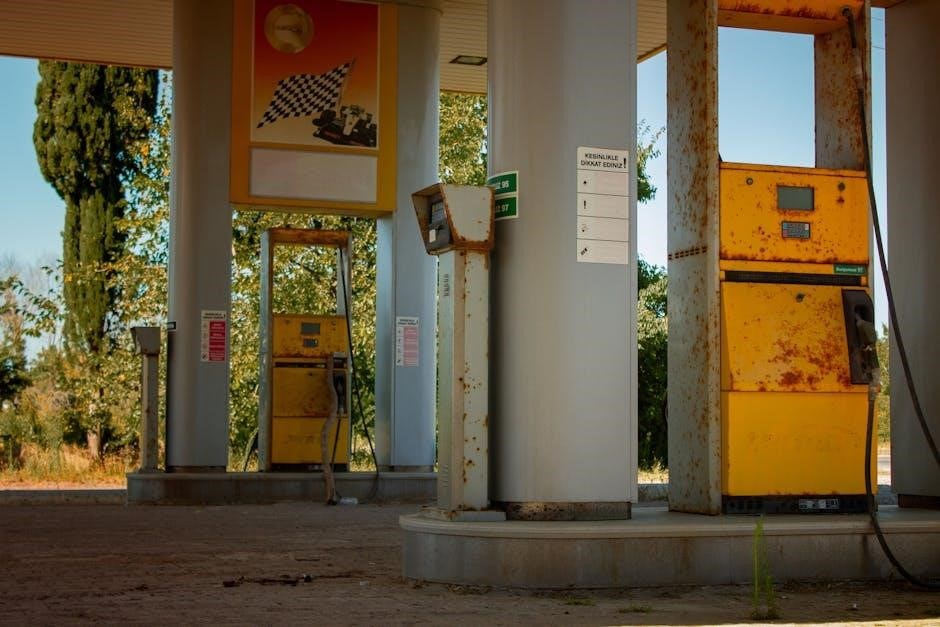
Compatibility with Cummins Engine Models
The Cummins PT fuel pump is designed for compatibility with NT and KT series engines, ensuring seamless integration and optimal performance across these popular diesel engine models.
7.1 Cummins NT and KT Series Engines
The Cummins NT and KT series engines are widely recognized for their durability and performance, making them a staple in heavy-duty applications. These engines are specifically designed to operate with the PT fuel pump system, which plays a critical role in their fuel injection process. The PT fuel pump ensures precise fuel delivery, which is essential for maintaining optimal engine performance, efficiency, and reliability. Compatibility between the PT fuel pump and these engine models is seamless, as they are engineered to work together under various operational demands. This integration is a key factor in the overall effectiveness of the Cummins NT and KT series engines in delivering consistent power and meeting the demands of challenging work environments. Proper installation and maintenance of the PT fuel pump, as outlined in the manual, are crucial to uphold the engine’s performance and longevity.
7.2 Other Compatible Engine Models
Beyond the NT and KT series, the Cummins PT fuel pump is compatible with a variety of other engine models, ensuring its versatility across different applications. These include select models from the Cummins B, C, and L series, which are commonly used in industrial and commercial vehicles. The PT fuel pump’s design allows it to adapt to different engine configurations, making it a reliable choice for various diesel-powered machinery. This broad compatibility ensures that technicians and mechanics can rely on consistent performance and troubleshooting procedures, as detailed in the manual. The PT fuel pump’s widespread compatibility underscores Cummins’ commitment to providing robust and adaptable fuel systems for diverse engine requirements. This ensures optimal performance and fuel efficiency across multiple platforms.
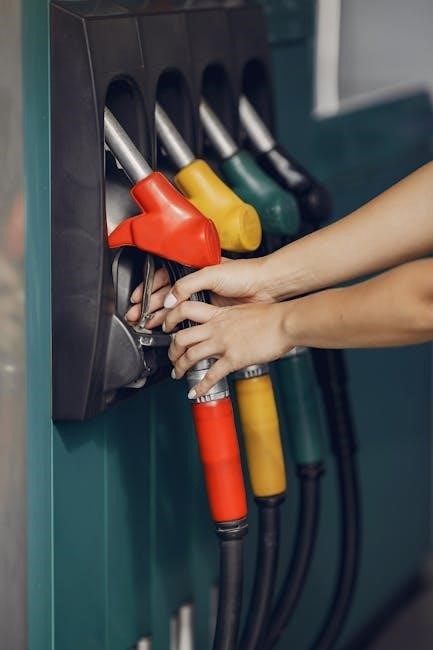
Official Cummins PT Fuel Pump Manuals and Resources
Official Cummins PT fuel pump manuals are available through Cummins Inc. or authorized distributors, providing detailed technical specifications, repair procedures, and diagnostic guides for optimal performance.
8.1 Accessing Genuine Cummins Service Manuals
To access genuine Cummins service manuals for the PT fuel pump, visit the official Cummins Inc. website or authorized distributors like Jensales. These manuals provide detailed technical specifications, repair procedures, and diagnostic guides. Ensure authenticity by purchasing from verified sources to maintain accuracy and compliance with manufacturer standards. Genuine manuals include parts catalogs, troubleshooting tips, and installation instructions tailored for Cummins PT fuel pumps. Additionally, Cummins offers digital versions of these manuals, making them easily accessible for technicians and mechanics. Always prioritize official documentation for reliable information and optimal performance of the PT fuel pump system.
8.2 Reliable Online Sources for Technical Documentation
For reliable technical documentation on the Cummins PT fuel pump, visit trusted sources like Jensales or Cummins Parts Catalog. These platforms offer authentic service manuals, parts diagrams, and repair guides. Jensales provides detailed PDF manuals for Cummins PT fuel pumps, ensuring accuracy and relevance. Additionally, Cummins official website and authorized distributors offer digital versions of service manuals tailored for the PT fuel pump system. Always verify the authenticity of the source to avoid unauthorized or outdated information. Peer-reviewed forums and Cummins-authorized service centers are also excellent resources for validated technical documentation, ensuring safe and effective maintenance of your PT fuel pump.

Safety Precautions and Best Practices
Always follow safety precautions and best practices when handling the Cummins PT fuel pump to ensure safe operation and prevent accidents.
9.1 Handling Fuel Systems Safely
Handling the Cummins PT fuel pump and related components requires strict adherence to safety protocols. Always wear protective gear like gloves and goggles to prevent injury. Ensure the fuel system is depressurized before any maintenance to avoid sudden releases of high-pressure fuel. Never allow fuel to come into contact with skin or eyes, as it can cause irritation. Proper ventilation is essential when working with fuel systems to prevent inhaling harmful vapors. Additionally, avoid sparks or open flames near fuel components to minimize fire risks. Always follow the manufacturer’s guidelines for handling and storing fuel system parts to ensure safety and system integrity. This is particularly important for sensitive components like the PT fuel pump and Electronic Fuel Control (EFC) system. By adhering to these precautions, you can maintain a safe working environment and prevent potential hazards associated with fuel system maintenance.
9.2 Adhering to Manufacturer Guidelines
Adhering to Cummins manufacturer guidelines is critical for the proper operation and longevity of the PT fuel pump. Always refer to the official Cummins PT fuel pump manual for specific instructions on installation, maintenance, and repair. Using genuine Cummins parts and following recommended procedures ensures compatibility and optimal performance. Deviating from these guidelines can lead to system malfunctions, reduced efficiency, or even safety hazards. Pay particular attention to torque specifications, fuel system pressures, and electrical connections when working with the PT fuel pump. Additionally, always ensure proper alignment and calibration, especially when integrating with the Electronic Fuel Control (EFC) system. By following Cummins guidelines, you can maintain the integrity of your fuel system and ensure reliable engine performance.
